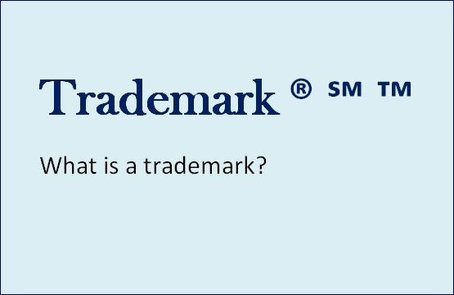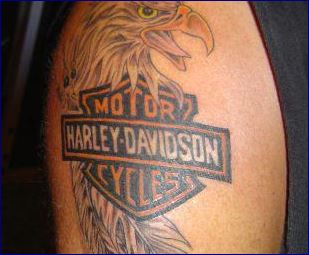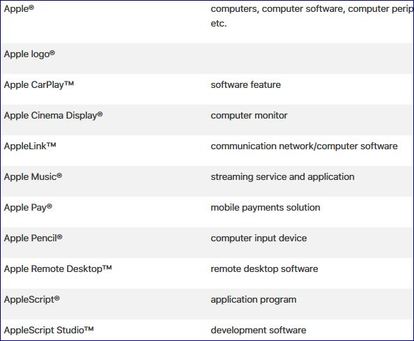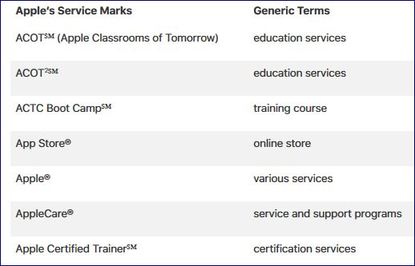|
Trademarks So your device, idea, or product becomes reality. Congratulations my friend. Perhaps it even becomes well known, like the famous Harley Davidson logo. Ask yourself this, how many companies have customers who tattoo their logos on their bodies? Probably not very many. I think we can all agree that that is one a hell of a brand. As a matter of fact, the Harley Davidson tattoo is reportedly the second most popular tattoo behind the word “mom”!
History The trademark office, created by acts of Congress, is there to offer logo owners the opportunity to register a brand and identify the owner or the product or service. Yes, that is correct – you can register a “service” as well. Those are usually referred to as Service Marks. In the United States, Congress first established a federal trademark system in 1870. This statute was derived from Congress' Copyright Clause powers. However, the Supreme Court struck down the 1870 statute. In 1881, Congress passed a new trademark act, this time pursuant to its Commerce Clause powers. Congress revised the Trademark Act in 1905. The Lanham Act of 1946 updated the law and has served, with several amendments, as the primary federal law on trademarks. You can find the trademark office at www.uspto.gov and they are a fee-funded agency of the U.S. Department of Commerce. The oldest U.S. registered trademark still in use is trademark reg. no 11210, a depiction of the Biblical figure Samson wrestling a lion, registered in the United States on May 27, 1884 by the J.P. Tolman Company (now Samson Rope Technologies, Inc.), a rope-making company. Just remember, a trademark is covered by Federal statues, many of which are complicated and may require the use of an attorney. It can be confusing for the lay-person, but with some time spent working through the process, you can obtain a trademark for your item. I have done it before and it was quite a learning experience. Which brings us to the first question: what can be trademarked? What Can Be Trademarked? Let us use the actual text directly from the United States Patent and Trademark Office’s website at www.uspto.gov, and see if we can parse this rather dense wording. A trademark typically protects brand names and logos used on goods and services. A patent protects an invention. A copyright protects an original artistic or literary work. For example, if you invent a new kind of vacuum cleaner, you would apply for a patent to protect the invention itself. You would apply to register a trademark to protect the brand name of the vacuum cleaner. And you might register a copyright for the TV commercial that you use to market the product. The first sentence says “brand names and logos” are typically trademarked. So what is a “brand name”? This could be the name of your company (think Apple or Microsoft), the name of your products (think iPhone, for example), of even a service you offer (think Apple Certified Trainer or Apple Store). I went to www.apple.com and located a “non-exhaustive list of Apple trademarks and service marks in the United States.” Read those last four words again, “…in the United States.” The process of claiming and registering trademarks and service marks worldwide is different in every country! There are United Nation agreements regulating that process and the recognition of foreign trademarks. I told you this would get complicated. If and when you become an international business, let the lawyers handle this part. It is far too complicated for you to attempt and far too many countries with different rules to understand.
 The proper manner to display either symbol is immediately following the mark in superscript style. So why wouldn’t Apple want to properly trademark all of these and use the ® symbol? I would hazard a guess that they believe no one will confuse AppleScript Studio™ with any other business except Apples. Also, many of those have two words with one of the words bearing the registered mark ®. So using our example, AppleScript Studio, the text AppleScript is a registered trademark so we can just add ™ to the full word and still be protected. In my own usage, one of my companies, Tidewater Capital Services, LLC, is a trademark and the other company, The Value Capitalist Newsletter™ is also a trademark. In the past I have trademarked many things for myself or have guided others as to the process. A side note here, registering a patent, trademark, or copyright is considered legal work and you must have a license to perform legal work. So who has a license to do that? You guessed it, your attorney! But you are allowed to do it for yourself.
What Can Be Trademarked? Believe it or not, you cannot register anything and everything. There are rules to follow. The most common reason to refuse registration is a “likelihood of confusion” between the mark of the applicant and a mark already registered or in a prior-filed pending application owned by another party. Again, from the USPTO office, "The USPTO determines that a likelihood of confusion exists when both (1) the marks are similar, and (2) the goods and/or services of the parties are related such that consumers would mistakenly believe they come from the same source. Similar marks or related goods/services by themselves are not enough to support a finding of a likelihood of confusion, unless a court has held that the mark is actually a famous mark. [We will get to famous marks shortly] That is, generally two identical marks can co-exist, so long as the goods and services are not related. Each application is decided on its own facts and no simple mechanical test is used to determine whether a likelihood of confusion exists. Therefore, before filing your non-refundable application, it is very important for you to determine whether your proposed mark is likely to cause confusion with another mark. This determination can be made only after doing a thorough trademark search." A trademark search is the second place to start, not the first. The first thing is to understand your mark, logo, words, whatever you call your brand should be pronounceable, not obscene, and dissimilar to any other registration. For example, if you attempt to register “Lupo” as your brand of new shoe and someone else has already registered “Wolf” for a shoe style, you will be denied. “Lupo” is a Spanish word meaning “wolf” in English. A little common sense is all that’s required. However, even if two marks are found to be confusingly similar, a likelihood of confusion will exist only if the product or services are, in fact, related. Whether the product or services are related is determined by considering the commercial relationship between them identified in the application with those identified in the registration or earlier-filed application. In other words, I can register “Lupo” as a logo for a shoe style if no other shoe styles have been registered with a similar name. And someone else can register “Lupo” as a cartoon logo or even a delivery service. There is probably not going to be any confusion between a cartoon logo and a shoe style. Again, directly from the USPTO: "The USPTO will also refuse registration of a proposed mark for many other reasons, including but not limited to the mark being: a surname; geographically descriptive of the origin of the goods/services; disparaging or offensive; a foreign term that translates to a descriptive or generic term; an individual’s name or likeness; the title of a single book and/or movie; and matter that is used in a purely ornamental manner. While some of these refusals are an absolute bar to registration, others may be overcome by evidence under certain circumstances." You cannot trademark your name unless it is used as a brand or logo. So President Trump can trademark Trump International golf course but not “Trump”. Obviously anything disparaging or offensive isn’t allowed nor is the title of a book or movie. What about Internet Domain Names? But what about a domain name? Nope. Not unless the domain name is the brand name. Use of a domain name only, as part of a web address, does not qualify as source-indicating trademark use, though other prominent use apart from the web address may qualify as trademark use. So Apple.com is not a trademarkable name, but Apple is, when referred to as the brand. You register your domain name with an accredited domain name registrar, not through the USPTO. Registration of a domain name with a registrar does not give you any trademark rights. For example, even if you register a domain name with a domain name registrar, you could later be required to surrender it if it infringes someone else’s trademark rights. Similarly, the usage of your business name as the source of the product may qualify it as both a business name and a trademark. Not to be left out of this fee feeding frenzy, many states and even counties have name registration requirements. For example, as of this writing, the state of North Carolina has its own state-wide business name registration system! But remember this, a state’s authorization to form a business with a particular name does not give you trademark rights to that name. Other parties could later try to prevent your use of the business name if they believe a likelihood of confusion exists with their trademarks. Searching the Database Now is where we have to search the federal trademark database, known as the Trademark Electronic Search System (TESS), located at https://www.uspto.gov/trademarks-application-process/search-trademark-database. You would think this is the easy part, right. Sorry pal. If your mark includes a design element, such as a star or ruler or image of a laptop, anything other than words, you must search using a “design code”. The USPTO assigns all marks containing design figurative elements a 6-digit numerical code for searching purposes. A design code search is also conducted using TESS. For assistance in searching with a design code, access the Design Search Code Manual found at http://tess2.uspto.gov/tmdb/dscm/index.htm. This manual indexes the categories, divisions, and sections that make up these codes. For example, a five-pointed star would be coded in category 01 (celestial bodies, natural phenomena and geographical maps), division 01 (stars, comets) and section 03 (stars with five points), resulting in a complete design code of 01.01.03. When you stop and think about it, this sort of makes sense. You might have created your own logo and want to trademark it, but you still have to search for other identical or similar logos. So this system of images to numbers was created and works pretty well. Is There Any Other Way To Protect My Mark? Why yes there is my friend. In the United States, parties are not required to register their marks to obtain protect-able rights. You can establish “common law” rights in a mark based solely on use of the mark in commerce, without a registration, or if it is a “famous name.” However, owning a federal trademark registration on the Principal Register provides a number of significant advantages over common law rights alone. Typically you will have to use your mark in commerce for five years to obtain protection against a counter claim. Once you have searched the database, the internet, and possibly the Secretary of State’s office in the states that you want to sell your products and services, you are ready to fill out the paperwork and submit to the USPTO. At this point there are two different ways of filing out the form. Again from the USPTO website: "Every application must include a clear image of one mark (“the drawing”). The USPTO uses the drawing to upload the mark into the USPTO search database and to print the mark in the official Gazette (OG) and on the registration certificate. If you have variations on the mark that you wish to register, each requires its own separate application and fee." There are two types of drawings: “standard character” and “special form.” What is a “standard character” drawing? A standard character drawing is commonly submitted when the mark you wish to register consists solely of words, letters, or numbers. A standard character mark protects the wording itself, without limiting the mark to a specific font, style, size, or color and therefore gives you broader protection than a special form drawing.
They could have registered the words “Charles Schwab” as a trademark without any consideration of the pretty logo. Or they could have registered those words used on the blue background as their trademark. That is called a “special form” drawing. Since we can’t register names, they will have registered the logo, colors and all. There could be hundreds of people in the U.S. with the name of Charles Schwab – that is why you can’t register your name. All of those people would be subject to a lawsuit if that were allowed!
Black and White or Color? You generally want to register the logo in black and white, because a black-and-white drawing covers the use of your mark in any color. However, if it is important that your customers associate specific colors in your mark with your product, you may wish to limit your mark and claim those colors as part of your mark. If you do submit a color claim, then you must also submit a color drawing of your mark that matches the colors you are claiming. Where to go Next As you can see this becomes a complicated endeavor and we highly recommend hiring an attorney who is accomplished in Intellectual Property (or IP) law. The law school course on IP covers patents, copyrights, and trademarks and is usually considered one of the more difficult courses. There is another method available for you to use. Hire an experienced consultant who can walk you through all of this confusion and be the go to person for the attorney. A knowledgeable consultant, such as myself, has experience in all aspects of building and protecting a business. I will work with the legal people to give you your trademarks, patents, copyrights, incorporation paperwork, even help design your logos and find manufacturers to build your dream gadget, gizmo or thingy. I’ll leave you with one of my favorite Thomas Edison quotes, “There is no substitute for hard work.” As you can see, you have some hard work in front of you! Thanks for reading and good luck. ----- Tidewater Capital Services is an international private investment firm based in Charlotte, North Carolina. We believe that the true economic value of every asset is realized over the long term. Often that means holding an investment for years. To capture the true economic value, we seek to invest our own capital where there is a high-growth potential business, run by intelligent, trustworthy founders. Our capital, along with our many decades of experience, will often be the difference between success and failure. We encourage you to review our equity investment criteria page for more information. Lee West - Founder & C.E.O., Tidewater Capital Services. -----
0 Comments
Your comment will be posted after it is approved.
Leave a Reply. |
AuthorMy name is Lee West. I help people develop their businesses into industry leaders so they can achieve their dreams. Thank you for reading. Archives |





 RSS Feed
RSS Feed